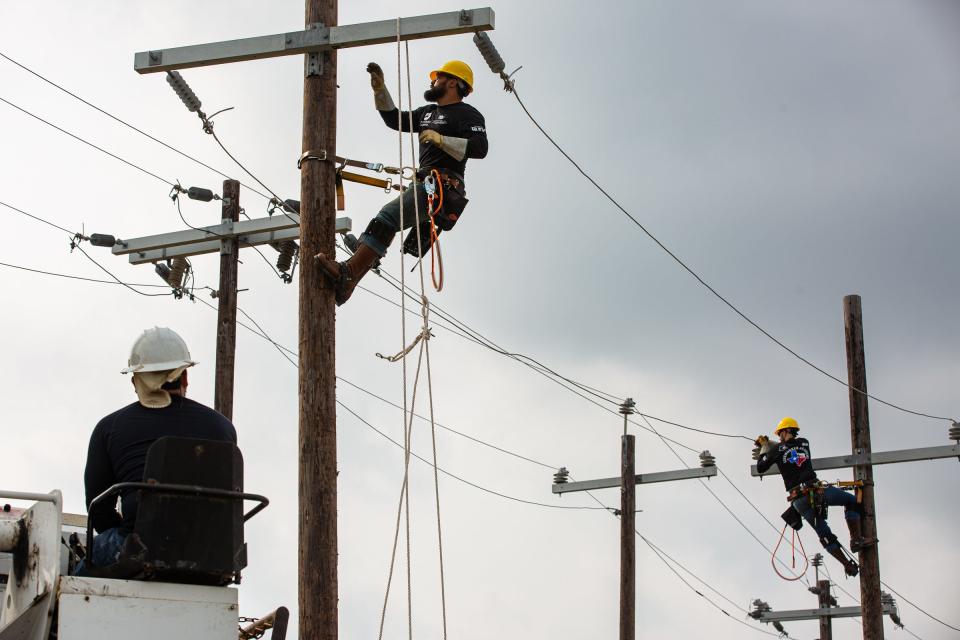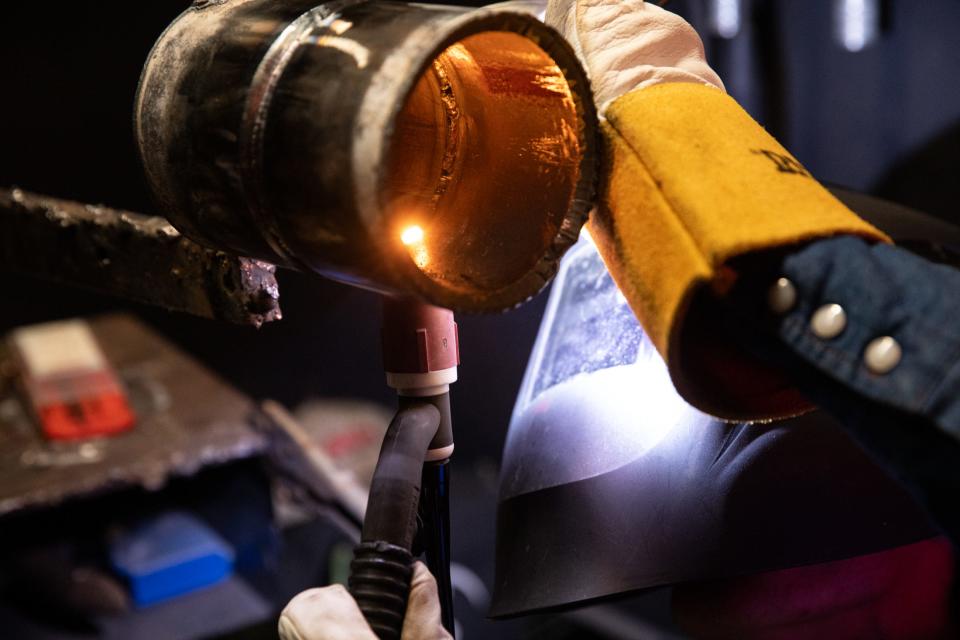Del Mar College marks growth in continuing education as Texas community colleges rebound
Del Mar College saw a nearly 6% growth in student headcounts this fall, entirely based on the growth of continuing education programs.
In the first quarter of the academic year, which runs from September through November, the college counted more than 2,800 continuing education students, a 700-student or 10% increase from the same quarter in 2022. This comes after a 2.4% increase in annual continuing education headcounts between 2021-22 and 2022-23.
Continuing education programs include adult education and career and industry training programs, such as construction, electrical, pipeline, transportation, welding, HVAC, instrumentation, millwright, certified nurse aid, electrocardiography technician and phlebotomy technician programs. Students work towards industry certifications.

By comparison, student headcounts have remained flat on the credit side of the college, which includes students who are pursuing an associate degree or hope to transfer to a four-year institution. In fall 2022, Del Mar College counted 9,724 students as of the end of October. This fall, it only counted 9,721 at the same point.
The relative lack of change indicates a potential turning point in post-pandemic trends. Del Mar College has had about 10,000 credit students in the fall and summer for the past two years. But in 2021 and 2020, it had more than 10,500. Before the pandemic in the fall of 2019, it had over 12,000.
Del Mar College staff presented these figures, as well as data on contact hours, or the amount of time students spent in the classroom, and resulting impacts on funding, during a Board of Regents meeting Tuesday.
Statewide, community colleges enrollment went from about 747,000 in fall 2019 to about 648,600 in fall 2021. Collectively, community colleges have reversed the decline in students to a greater extent than Del Mar College has — Texas community college enrollment was back on the rise to about 676,100 in fall 2023 according to preliminary figures from the Texas Higher Education Coordinating Board.
But Del Mar College staff say that focusing only on the credit side misses the work it has done in providing short-term workforce training in continuing education programs.
The state has redesigned its community college funding model. Historically, colleges collected state funding based on contact hours. Going forward, funding will be calculated based on outcomes. This means that because of Del Mar College’s focus on continuing education in recent years, it is positioned well to benefit from the new model.
“We’re really focused on how do we serve the whole community,” executive vice president and chief operating officer Lenora Keas said. “We work a great deal with business and industry and provide training. In total context, we’re really putting students into the type of education and instruction that best fits their needs.”

Del Mar College has a stackable and convertible credit model where students who start in continuing education programs can use those industry-based credentials as the basis for a higher certification or associate’s degree if they continue taking classes and become credit students.
“We’ve gotten state recognition for our stackable credentials,” associate vice president for continuing education Leonard Rivera said. “Students can start at any level. Typically, people always think it’s the credit side that they start out. But many students come in and they haven’t been to school for a while so they may actually start in continuing education. Or, they don’t have a high school degree and they might start in our adult education program.”
In looking at how to increase credit student headcounts, the college has also looked at program options. The college introduced a registered nurse to bachelor of science in nursing program in 2022. The college is also working towards introducing a bachelor of applied science degree in organizational management and leadership.
Dual credit headcounts, which covers students who are taking community college courses while still in high school, were also flat between fall 2022 and 2023 at Del Mar College. But, the college expects this to change in coming years.
This September, after the school year had already begun, Del Mar College announced it was eliminating tuition and fees for dual credit students. With Del Mar Credit programs now free for those students, the college expects more area students and schools to take advantage of the opportunity, Rivera said.
“We weren’t able to capture a lot of those students because they already had school in session,” Rivera said. “They already had things rocking and rolling. As we come back in the next school year, I anticipate we will serve those students and it will be reflected in our headcounts as significant increases to our dual credit population.”
Potential Del Mar College bachelor's degree program aimed at creating leaders
What to know about dual credit programs in Corpus Christi ISD
Del Mar College competition shows South Texas student interest in welding industry
This article originally appeared on Corpus Christi Caller Times: Del Mar College sees continuing education growth

